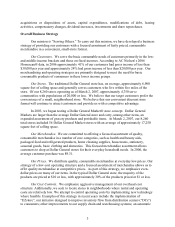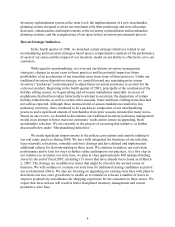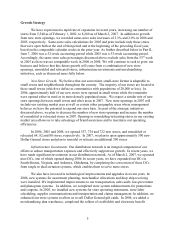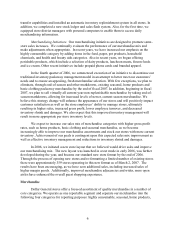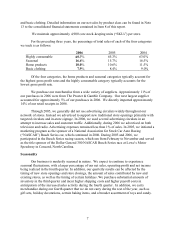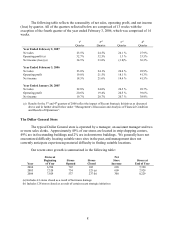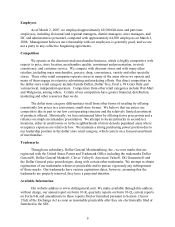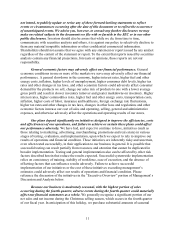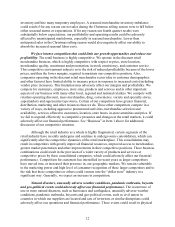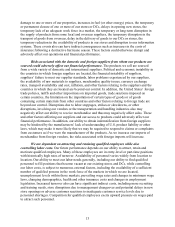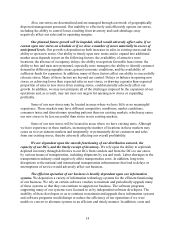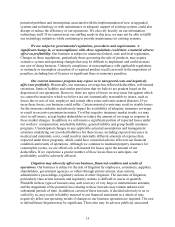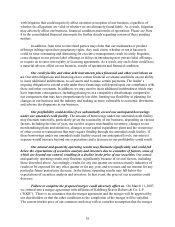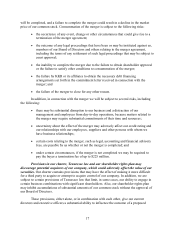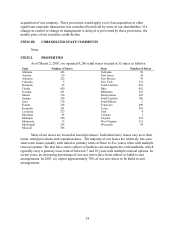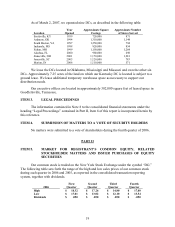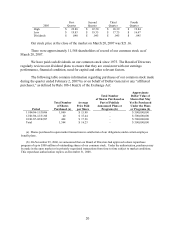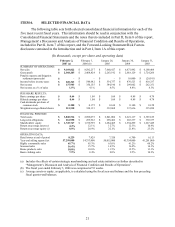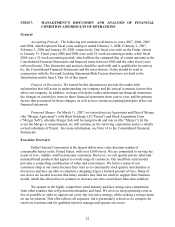Dollar General 2006 Annual Report Download - page 15
Download and view the complete annual report
Please find page 15 of the 2006 Dollar General annual report below. You can navigate through the pages in the report by either clicking on the pages listed below, or by using the keyword search tool below to find specific information within the annual report.damage to one or more of our properties, increases in fuel (or other energy) prices, the temporary
or permanent closure of one or more of our stores or DCs, delays in opening new stores, the
temporary lack of an adequate work force in a market, the temporary or long-term disruption in
the supply of products from some local and overseas suppliers, the temporary disruption in the
transport of goods from overseas, delay in the delivery of goods to our DCs or stores, the
temporary reduction in the availability of products in our stores and disruption to our information
systems. These events also can have indirect consequences such as increases in the costs of
insurance following a destructive hurricane season. These factors could otherwise disrupt and
adversely affect our operations and financial performance.
Risks associated with the domestic and foreign suppliers from whom our products are
sourced could adversely affect our financial performance. The products we sell are sourced
from a wide variety of domestic and international suppliers. Political and economic instability in
the countries in which foreign suppliers are located, the financial instability of suppliers,
suppliers’ failure to meet our supplier standards, labor problems experienced by our suppliers,
the availability of raw materials to suppliers, merchandise quality issues, currency exchange
rates, transport availability and cost, inflation, and other factors relating to the suppliers and the
countries in which they are located are beyond our control. In addition, the United States’ foreign
trade policies, tariffs and other impositions on imported goods, trade sanctions imposed on
certain countries, the limitation on the importation of certain types of goods or of goods
containing certain materials from other countries and other factors relating to foreign trade are
beyond our control. Disruptions due to labor stoppages, strikes or slowdowns, or other
disruptions, involving our vendors or the transportation and handling industries also may
negatively affect our ability to receive merchandise and thus may negatively affect sales. These
and other factors affecting our suppliers and our access to products could adversely affect our
financial performance. In addition, our ability to obtain indemnification from foreign suppliers
may be hindered by the manufacturers’ lack of understanding of U.S. product liability or other
laws, which may make it more likely that we may be required to respond to claims or complaints
from customers as if we were the manufacturer of the products. As we increase our imports of
merchandise from foreign vendors, the risks associated with foreign imports will increase.
We are dependent on attracting and retaining qualified employees while also
controlling labor costs. Our future performance depends on our ability to attract, retain and
motivate qualified employees. Many of these employees are in entry-level or part-time positions
with historically high rates of turnover. Availability of personnel varies widely from location to
location. Our ability to meet our labor needs generally, including our ability to find qualified
personnel to fill positions that become vacant at our existing stores and DCs, while controlling
our labor costs, is subject to numerous external factors, including the availability of a sufficient
number of qualified persons in the work force of the markets in which we are located,
unemployment levels within those markets, prevailing wage rates and changes in minimum wage
laws, changing demographics, health and other insurance costs and changes in employment
legislation. Increased turnover also can have significant indirect costs, including more recruiting
and training needs, store disruptions due to management changeover and potential delays in new
store openings or adverse customer reactions to inadequate customer service levels due to
personnel shortages. Competition for qualified employees exerts upward pressure on wages paid
to attract such personnel.
13


